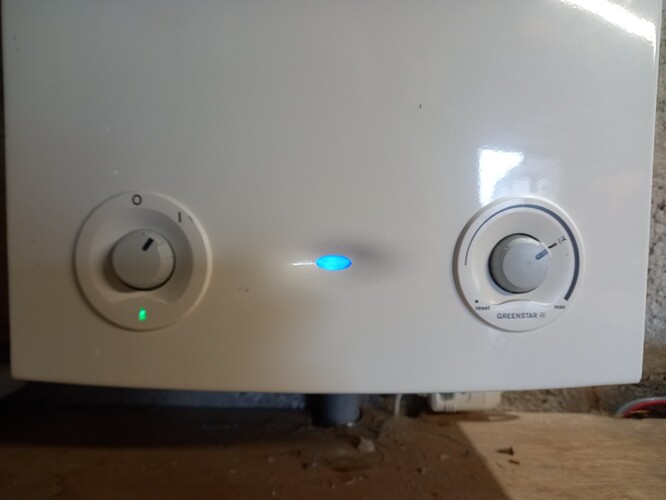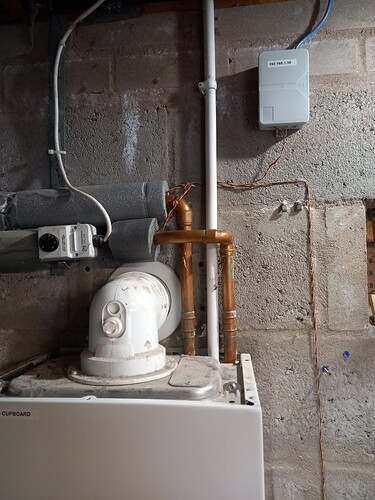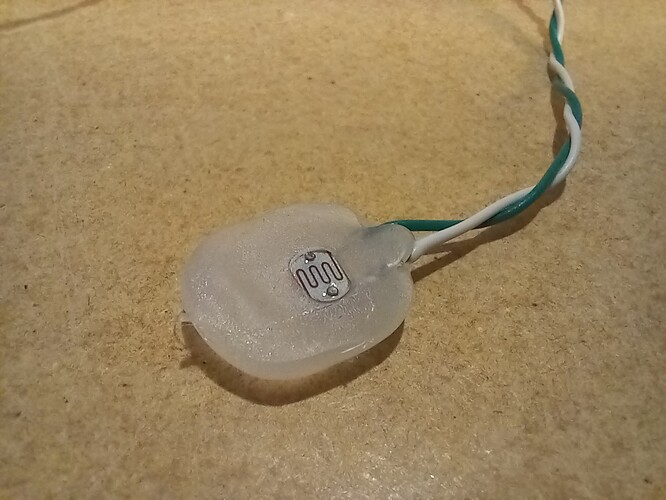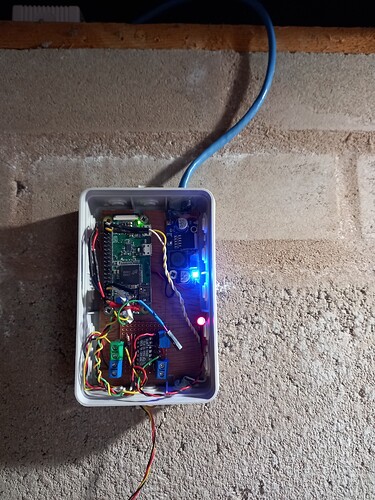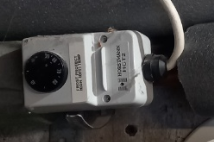Read the “gas flame by deltaT/electrical power posts” with interest so though to post what I have knocked together and learned this winter.
When working at home the TRV’s are set very low in the rooms am not using (Pegler Terrier programmable TRV’s I run round turning them down to 10degC when everyone leaves for work/school and close the doors. The TRV’s revert to program at 16:00).
Sat in my office I am aware the pump in main house - under boiler control- runs intermittently for sometimes as little as 5 minutes, so I think the boiler is cycling relatively fast, but I can’t see if the boiler is firing.
My boiler is in the garage, accessible by only going out the main house so I needed something to monitor it.
Attached shows the setup,it’s a RasperyPi zero and some DS18B20 sensors on the feed/return pipes, the PI reads the sensors and then makes a http:// call to the emonPI, which logs to a feed. The loop waits 60 seconds between readings, so the actual frequently is probably closer to 63 seconds, but for temperatures it’s fine.
The challenge has been working out if the boiler is firing, there is a nice green light on the front that comes on with the burner, you can hear the fan spin up and then the light comes on. I made an optical pickup from a LDR and hot glue, a quick resistive divider and digital conversion with a 4093 Schmit trigger and it feeds to the PI ZeroW’s GPIO pins. On the bench it works perfectly, however not on the boiler, where it would often indicate firing when it was not!
After much investigation the reason is there are too many light leaks around the knob above the green light. If the garage light is put on, or even the door open and some sun low in the sky enough light passes through the gap between knob and casing. Looking closely it’s not a LED behind the green indicator so I suspect it’s got some sort of perspex “light pipe” between a LED on a PCB and the indicator, that catches the light leaking in.
Given up for now - I think I will go the power monitoring route. Feedback on the points below very welcome…
Working out the boiler power…
The junction box is in the airing cupboard so I can put a CT on the boiler feed but the boiler also controls the pump. I also have trace heating on some pipes in the garage with it’s own outside thermostat, Trace heating is 5-30W when running. Thus the boiler power is boiler+pump+trace heating. The total load is around 170W when everything is running.
There’s a range of ways to solve this, power the pump via a relay switched form the boiler and rewire the trace heating are perhaps the “hardware” fixes, but has anyone any other ideas?
Measuring the Boiler Power
The airing cupboard is some way from the main emonPI, I could perhaps use an emonTX but they are 6 channels now and I only need one or perhaps 2, or are the old ones still for sale?
Last year when there was no emon’s in The shop I made a simple monitor for my solar immersion divert that just measured current with a CT, ArduinoNano and PiZero, this works very well, the diverter power factor changes with load, but it’s one device so I just made a calibration curve for current → power.
I am not sure I could do the same as the power factor of the total load would depend on which bits of the system are running; trace heating is restive, but the pump, boiler (and the components within it) I have no idea?
